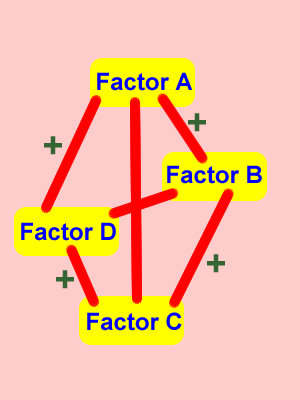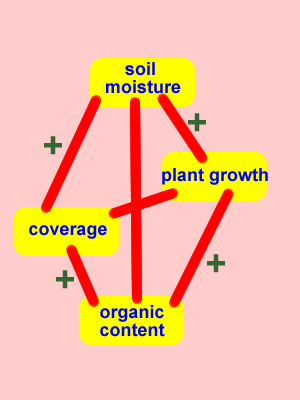objects/everything-is-connected.html
![]()
Everything is Connected |
|
Title: Everything-is-connected |
|
1. The first "law" of ecology is that everything is connected and that you can't do just one thing
2. Internal linkages can stabilize ecosystems and other organizations
3. Control of a complex system may require a similar level of complexity
4. Internal feedbacks are crucial
|
 |
5. Examples:
|
 |
Notes:
|
|
References:
|
|